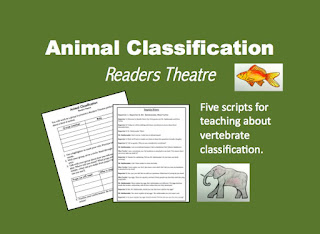 I love using readers theatre scripts to introduce key concepts. Kids find scripts engaging and interesting; the script format leads to high engagement; and kids have a real reason to pronounce and use key vocabulary.
I love using readers theatre scripts to introduce key concepts. Kids find scripts engaging and interesting; the script format leads to high engagement; and kids have a real reason to pronounce and use key vocabulary.Writing these scripts makes me feel like I'm a writer on a 50s-era variety show. What madcap situation should I use? How can I put characters in an interesting situation? I work under some serious constraints, too. I have to make sure that the roles are fairly even, or squabbling will ensue. I have to make sure that key vocabulary is repeated by more than one character. And whatever situation I develop must come to a conclusion in two or possibly three pages.
This week I wrote a new script about argumentative essays. Like most of the scripts that I write, this one was born from necessity--I wanted an engaging way to introduce the parts of an essay. My goal was for students to be able to annotate an argumentative essay and mark the parts. This got me thinking about what the parts of an essay would be like, personality-wise, which led to the script.
It's silly, it's ridiculous, but it got the job done. After reading the script students were able to go into an argumentative essay (I used these) and mark the parts. The script also led to some great questions, like these:
-Can the counterclaim come in the introductory paragraph? (Yes, definitely!)
-Do argumentative texts have more than one claim? (Indeed! Why did the script have only one Claim?)
-Why is Conclusion so sleepy? (Why, indeed?)
Bringing the parts of an essay to life can be fun. Try it out! The script is free and can be downloaded here.
Other Readers Theatre Scripts











